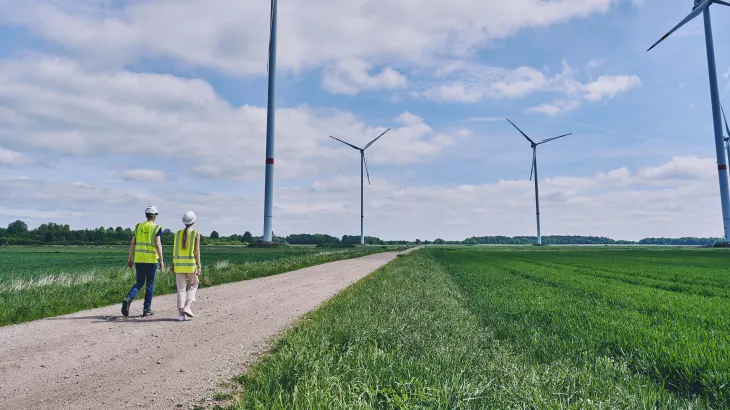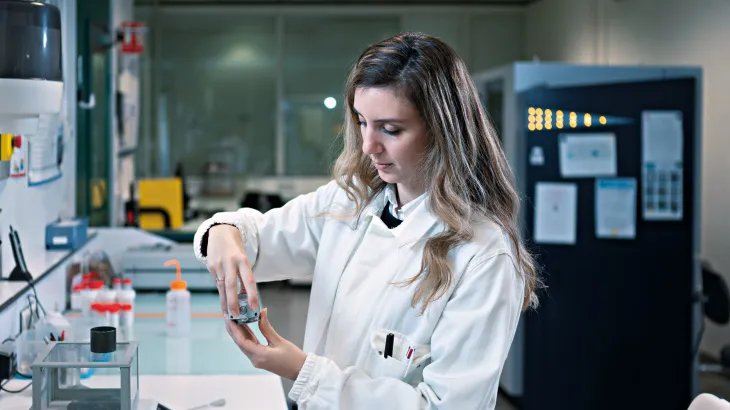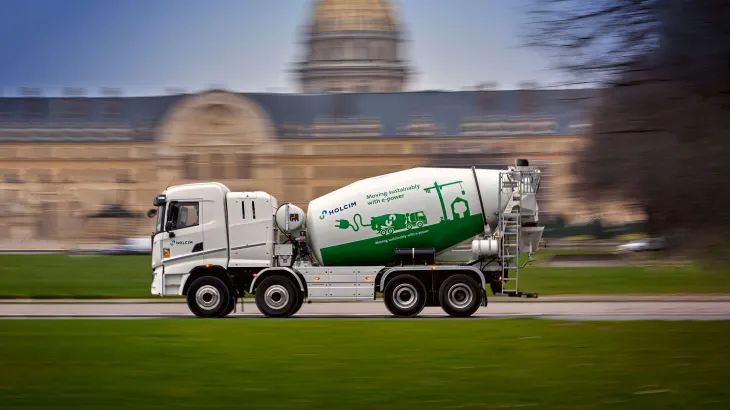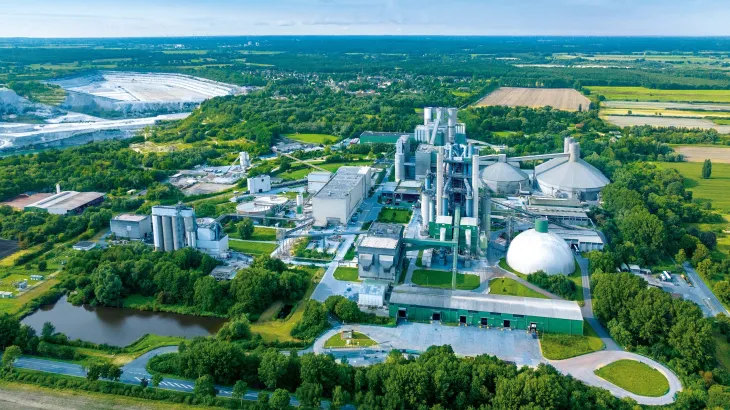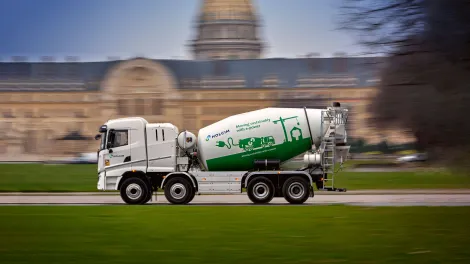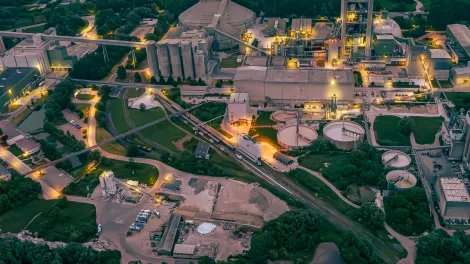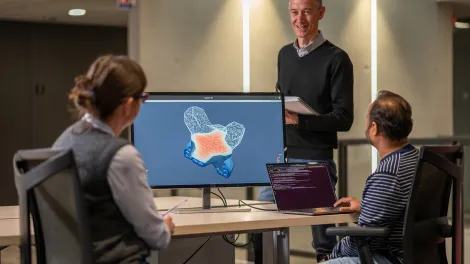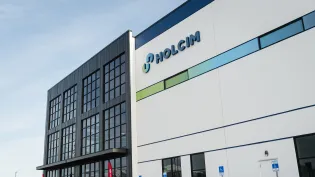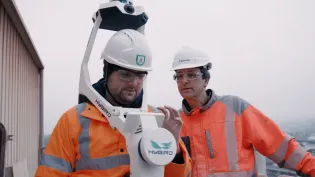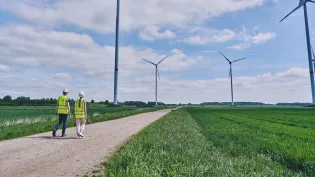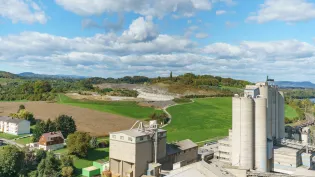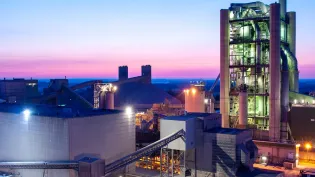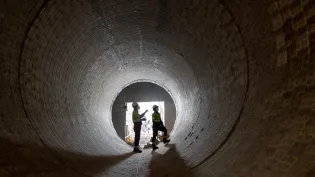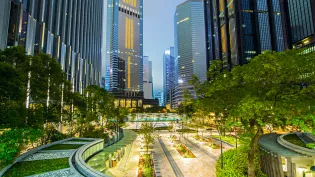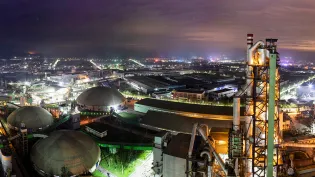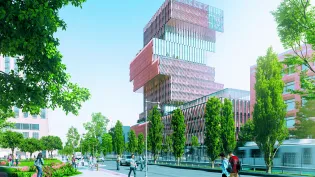green operations
We are decarbonizing our own operations to become a net-zero company.
Holcim is doing so by switching to decarbonized energy, developing new low-carbon formulations, adopting green mobility and using advanced technologies such as carbon capture, utilization and storage (CCUS).
DECARBONIZING OUR ENERGY MIX
At Holcim, we are shifting to decarbonized energy across our value chain from alternative fuels and renewable electricity to waste heat recovery systems.
We are optimizing our energy use by modernizing our kilns to lower our CO2 emissions. For example, at our plant in Obourg, Belgium, we are installing an innovative oxyfuel cement kiln that significantly reduces CO2 emissions.
As part of our Plants of Tomorrow initiative, we use digital solutions to create connected, smart and energy-efficient sites that will complement our other decarbonization levers.
Our transition to alternative fuels involves substituting traditional fossil fuels used in cement kilns, which include coal, petcoke and natural gas.
We are increasingly using alternative fuels enabled by our Geocycle business that transforms waste into resources. Taking a circular approach, we are reducing the carbon intensity of our cement by substituting fossil fuels with pre-treated non-recyclable and biomass waste fuels. We have facilities around the world operating on over 80% alternative fuels.
Electricity makes up a significant portion of our energy use. We are shifting to renewable energy sources like solar, hydro- and wind power wherever possible to decarbonize our electricity use.
We have green energy contracts with suppliers to power our operations, and we are installing renewable energy facilities on our own sites. Our Fort Totten ready-mix concrete plant in Washington, D.C., uses solar arrays to generate renewable energy. In Germany, we are meeting a significant portion of electricity needs with wind power.
Our goal is to reduce scope 2 emissions – which come from purchased electricity to power our sites – by 65% by 2030, against a 2018 baseline.
We have waste heat recovery programs in place to use excess heat from cement kilns to generate electricity. We currently operate eight waste heat recovery units that enable a carbon reduction of around 165,000 tons annually. We plan to triple the number of these units by 2030.
DECARBONIZING OUR SOLUTIONS
We offer a broad range of sustainable building solutions and use our formulation expertise to decarbonize our concrete and cement.
ECOPact and ECOPlanet both offer CO2 reductions of at least 30% compared to standard (CEM I/OPC) local concrete and cement, respectively.
The majority of emissions from the cement production process results from the calcination of limestone into clinker. We are reducing the clinker factor of our cement and replacing it with mineral components to reduce emissions, notably:
• Recycled cement paste from construction demolition materials
• Innovative mineral components like calcined clay, pozzolana and reclaimed ashes
• Waste from other industries, including slag and fly ash, to replace virgin limestone and avoid landfill
• Traditional mineral components like limestone and gypsum
Calcined clay is a mineral powder obtained through the calcination of natural clays at a relatively low temperature. It acts as a replacement for limestone-based clinker in the final cement, allowing us to produce cement with up to 50% less CO2 than standard cement.
In 2023, we launched Europe’s first calcined clay cement operation at our Saint-Pierre-la-Cour plant in France. This advanced production line, a world first, runs on our proximA Tech proprietary technology, and will produce both clinker and calcined clay to deliver up to 500,000 tons of low-carbon cement per year.
DECARBONIZING OUR mobility
We are transitioning to low-carbon mobility from quarry to city by adopting more sustainable and efficient transport options, using low-emissions trucks as well as rail and waterways.
We are deploying electric fleets where possible across our operations: from autonomous electric vehicles in our quarries, to heavy-duty electric trucks to distribute our materials. Our goal is to reach 30% of zero-emission heavy-duty truck purchases or contracts by 2030.
We are pushing the boundaries of digitalization across our business, starting with transport and logistics. The Transport Analytics Center (TAC) is our proprietary digital technology platform that optimizes load and route efficiency, safety and carbon footprint.
Beyond our own operations, we work closely with our supply chain partners to support them with green mobility solutions.
In 2023, we joined the Smart Freight Centre, a global nonprofit organization founded to make the global freight sector more efficient and environmentally sustainable. We also are the first construction and building materials company to become a member of the platform under the Global Logistics Emissions Council (GLEC).
Driving advanced technologies
We are focusing on advanced technologies as we progress toward net zero, innovating in electrification, hydrogen and carbon capture, utilization and storage (CCUS).
At Holcim, our experts are continuously developing the latest technologies to make construction more sustainable, collaborating with a range of partners – from start-ups to academic institutions.
Harnessing advanced technologies like carbon capture, utilization and storage (CCUS) is a game-changer to meet long-term climate goals. With six full-scale projects in execution, we are committed to capturing over 5 million tons of CO2 annually and producing 8 million tons of ECOPlanet Zero fully decarbonized cement by 2030.
Low-carbon hydrogen, produced using clean energy, is a potential alternative to the fossil fuels powering our transportation and cement kilns. It also enables us to increase the amount of alternative fuels we use, particularly biogenic fuels, which often have lower calorific value or are harder to ignite.
We are exploring the electrification of our processes to decrease our dependence on fossil fuels by substituting them for clean electricity. We are examining and testing new technologies to bolster our electrification portfolio, as well as collaborating with global leaders in electricity production to secure clean electricity supply for our projects.






